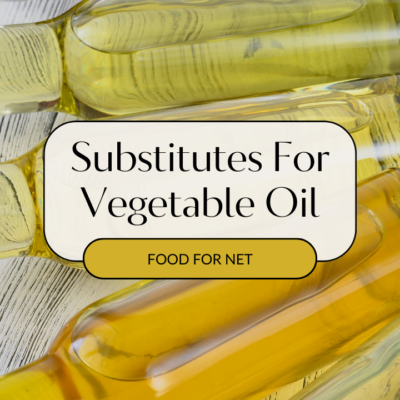
Love it or hate it, powdered milk is a powerful shelf-stable pantry ingredient. It is used in countless recipes, as an alternative to milk, to provide a specific flavor, to add richness, or to improve texture. So, what if you run out right at the crucial moment? Or, if you want a dairy free alternative with all the same properties?
This is where you need substitutes for powdered milk, including options like regular milk, coconut milk powder, soy milk powder, evaporated milk, or even cornstarch.
Each substitute has its own interesting features. For example, regular milk is a liquid, so you’ll need to tweak the liquid measurements elsewhere in your recipe. Coconut milk powder gets around the liquid issue but has a distinct coconut flavor that is really odd in some recipes.
The best substitute will also vary depending on what powdered milk actually does in your recipe. If it acts as a thickener, your replacement will need thickening properties too. If it’s adding the flavor of milk, you’ll need a dairy-based alternative, like regular milk.
Substitutes For Powdered Milk
Regular Milk

Regular milk is the most obvious substitute for powdered milk, as it’s just a liquid version of the same thing. The trick is to match the type of milk to your powdered milk. So, if the recipe calls for full fat powdered milk, use full fat milk instead.
The biggest challenge is the moisture difference. To get around this, you’ll need to reduce the amount of liquid elsewhere in the recipe. As a rule of thumb, try using a cup of regular milk for every 1/4 cup of milk powder in the recipe, then decrease the liquid elsewhere in your recipe by a cup.
Alternatively, you can use regular milk instead of water in your recipe. For example, if the recipe called for 1 1/4 cup water and 1/4 cup powdered milk, you’d add 1 1/4 cup milk and ignore the powdered milk requirement. This simple substitution works well in many recipes and offers the right balance of liquid and flavor.
These approaches are best for recipes with a cup or more of water. If there isn’t much water, regular milk would change the texture too much.
Plant-Based Milk

You can also use plant-based milk, including soy milk, almond milk, and coconut milk. This is helpful if you’re looking for a convenient dairy free option.
The principles of doing so are the same as for regular milk. However, plant-based milks vary in their thickness, so you might need to tweak the amount of liquid. For example, almond milk is thinner and more watery than coconut milk, so you’d need to remove more liquid to make the recipe work.
There’s the flavor to think about too. Some plant-based milks have a distinct flavor, so they’ll change the taste of your dish. This is particularly true for coconut milk and hazelnut milk.
Others are milder. For example, oat milk isn’t even noticeable in many recipes, making it a great choice. The same is true for soy milk.
Coconut Milk Powder

In some ways, coconut milk powder is the perfect substitute, as it’s already a powder and there’s no need to adjust the liquid in your recipe.
It’s also a shelf-stable vegan friendly option. This means you can keep some in the cupboard and simply pull some out whenever you need it.
There are some big limitations to consider. One is the flavor, as the powder really does taste like coconut. While this coconut taste will be fine in some recipes it will taste weird in others.
Coconut milk powder is also somewhat obscure. You might even need to order it online, as local stores often won’t stock it. So, you’ll need to plan ahead to use coconut milk powder as a substitute for milk powder.
Oat Milk Powder

Then there’s oat milk powder. This is tricky to find too, although it is becoming more popular. You might even find some in the plant-based milk section of a local grocery store.
Oat milk powder has a mild and slightly sweet flavor. You can even use it in most savory dishes without a problem. The powder also has a thickening effect, making it even more useful as a milk powder substitute.
You can use oat milk powder as a 1:1 replacement for powdered milk in most recipes. Just pay attention to the liquid in your recipe. Oat milk may not absorb as much water as powdered milk because of its fiber content. If so, you’ll need to slightly decrease the liquid in your recipe to compensate.
Soy Milk Powder

Soy milk powder is another vegan and dairy free alternative to powdered milk. Its fairly neutral flavor works well in many recipes, including baking and savory meals.
Once again, you can use the powder as a 1:1 powdered milk replacement. However, soy milk doesn’t have thickening properties, so some recipes may also require a thickener, like cornstarch.
The powder also provides some nutrients and more protein than regular milk powder. Still… it won’t always be suitable, especially as soy is controversial and a common allergen.
Almond Milk Powder

Are you noticing a theme here? Most types of dairy free milk can be turned into a powder (although some powders are more common than others).
Almond milk powder will work as a powdered milk replacement, but only in some situations. Notably, it tends to be thinner when reconstituted and has a distinct nutty flavor. Try adding a thickening powder or decreasing the liquid in your recipe to compensate for this thinness.
While the nutty flavor can be helpful in some recipes, like baking, it can easily overpower your other ingredients. So, it’s worth thinking about the flavor carefully before using this powder.
Cashew Milk Powder

Cashew milk powder works better than you might expect, as it provides a creamy texture and the nuttiness isn’t too dramatic. Unfortunately, this product is rarer than some of the other plant-based milk powders, so you may need to source it online.
Most of the time, you’ll be using this powder as a 1:1 substitute for milk powder. You may need to blend it with liquid before adding it to your recipe, as some products clump easily.
Evaporated Milk

Evaporated milk is higher in milk solids than regular milk, making it thicker and richer.
With regular milk, you would use a cup of milk for each 1/4 cup of milk powder, then the liquid in your recipe by a cup. For evaporated milk, you could start with 1/2 evaporated milk for each 1/4 cup of milk powder, then decrease the liquid by 1/2 cup.
However, some experimentation may be needed to get the right results. You may also notice some flavor changes as the evaporation process creates caramelized notes in evaporated milk.
The challenges with flavor and consistency make evaporated milk less than ideal as a powdered milk substitute. Still… it has the advantage of being shelf stable. So, you can keep a can of it in the cupboard for baking emergencies.
Cornstarch

Cornstarch is a different type of substitute, as it doesn’t add a milk flavor or creamy texture to your recipe. It does, however, help to thicken the recipe. This makes it relevant in dishes like sauces or soups, where milk powder mostly acts as a thickener.
To use this substitute, start with just a small amount of cornstarch, perhaps just a tablespoon for every 1/4 cup powdered milk in your recipe. Mix this cornstarch with a bit of water to create a slurry, then incorporate it slowly into your dish.
You may also need to add a little butter to give your recipe some of the richness of milk powder.
Cornstarch And Milk

You can also mix cornstarch and milk, then use this combination in place of powdered milk. Doing so gives you a similar flavor to powdered milk and some of the thickening properties.
This substitution is trickier than the others, as you’ll need to experiment with the amount of milk and the amount of cornstarch. You may need to adjust the liquid in your recipe as well.
The best quantities will vary between recipes. For example, cakes are meant to be fairly moist, so they may require more cornstarch than cookies.
Still, once you find the right balance for a particular recipe, you can use this as a regular alternative.
Nothing

You don’t always need a substitute for milk powder. Sometimes, you can just simply leave the milk powder out entirely.
This is most true for baking recipes that call for milk and also milk powder (like a bread recipe that asks for 1/2 cup of milk and 2 tablespoons of powdered milk). Here, the milk powder largely adds flavor. It may play a slight role in the tenderness or crust of the loaf too, but the effects are minor.
You might also be able to skip milk powder in stews or soups, as the milk powder is most relevant for flavor. Your finished dish should still be delicious, even if the flavor profile has changed somewhat.
How well this works depends on the specific recipe and milk powder’s role.
Bonus: Homemade Powdered Milk

There’s also the option of making your own powdered milk instead of buying it. Doing so involves dehydrating the milk, so you’ll need to use your oven or a dehydrator.
This approach isn’t helpful if you need dehydrated milk urgently, as it takes roughly 12 hours to turn your fresh milk into powdered milk. Still, it might be relevant if you have extra milk and some spare time.
You may even be able to make homemade lactose free powdered milk by starting with store bought lactose free milk. This is powerful, as commercial lactose free milk is sometimes hard to find.
Which Powdered Milk Substitutes Are Right For You?
Best Powdered Milk Substitute For Baking
If you’re making something crisp, like cookies, it’s best to skip the milk or use a different type of powder (like oat milk powder). If your recipe uses more moisture, you can turn to regular milk and simply decrease the amount of liquid in your recipe.
Best Powdered Milk Substitute For Making Bread
Powdered milk is often used for flavor in bread, so can sometimes skip it entirely. You could use another type of powder, like oat milk powder or soy milk powder, but the texture and flavor of your bread might be slightly different.
Best Milk Powder Substitutes For Puddings
Things are a little different if you’re making puddings or custard, as the milk powder impacts the flavor and texture of your recipe. You’ll often want a liquid alternative, like regular milk or coconut milk. Evaporated milk could work well in some recipes too.
Lactose Free Alternatives For Powdered Milk
The plant-based milk powders are all lactose free and have some of the same properties as your powdered milk. Soy milk and oat milk are great places to begin as both have a fairly mild flavor.

















 How To Freeze Apples
How To Freeze Apples